




2612 Main St.
Architect: Sumner P. Hunt


First Roy Jones, 2612 Main St
photo by Michael Grandcolas
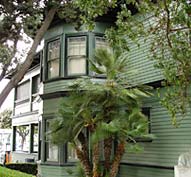
Side view
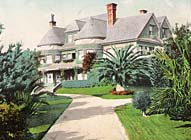
Santa Monica, CA - Residence of Senator Jones
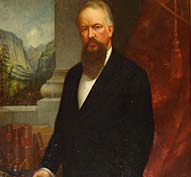
Portait of Roy Jones -City Hall
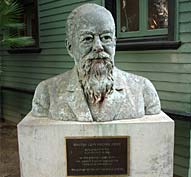
Bust of Roy Jones
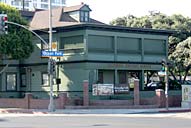
Wide angle
Our local paper, the Santa Monica Outlook wrote about the project in their May 26, 1894 issue, "Five new residences, ranging in cost from $3,000 to $5,000, are now in the course of construction in Santa Monica. Those of Messrs. Roy Jones and Kennelly, on Ocean Avenue...are about completed. They are all handsome structures, and show that there is to be no deterioration in architectural styles in our growing city by the sea."
Known as the First Roy Jones House, this impressive piece of architecture is the earliest known American Colonial Revival style design of Sumner P. Hunt. The Roy Jones Home is designed in a style in transition from the elaborate Victorian Queen Anne Revival, to the simpler American Colonial or Georgian Revival style. Originally located at 1007 Ocean Ave., the house was donated to the Heritage Square Museum and moved to its present location in 1977. Currently the Sunday Farmer’s Market is held in the parking lot.
The June 30, 1894 edition of the Santa Monica Outlook declared, "Sumner P. Hunt, architect, of Los Angeles, had made his 'imprint' upon this town in a pleasant way that is not excelled by anyone who has ever 'struck' it. He designed the...residence of Mr. Roy Jones...They are all neat, slightly edifices, and are a gratifying step in advancing the style of our architecture."
The home spent its first years on Ocean Avenue, lived in by the Jones family, followed by Gustavus S. Homes. As time progressed, it was converted from a single family home to a rooming house.
Named an Official City Landmark in January of 1979, the California Heritage Museum opened the following year. The museum curates displays of American decorative and fine arts.
For the record the Jones and Conger families were among the pioneers of California and Nevada. Thomas Conger became state senator in California. Conger's son-in-law, John P. Jones, became senator in Nevada before founding the City of Santa Monica.
The firm of Sumner P. Hunt and Silas Reese Burns has created several landmarked structures around Los Angeles. Hunt + Burns buildings included on the National Register of Historic places are the Southwest Museum (1914 - The lower entrance on Museum Drive, built in 1920, is a significant example of Pre-Columbian Revival design.) and the Automobile Club of Southern California (1923) and the Italian Renaissance Revival styled Ebell Club, 1927.
Hunt has also designed several local landmarks outside of Santa Monica. The Sunshine Mission (1892) was once an elegant home. It later became the Froebel Institute (a fashionable girls’ school), and a dormitory for USC students. It was used by the military in World War II, has been part of the Foursquare Gospel Church, and is now a women’s shelter.
The Kinney-Everhardy House (1902) and designed by Sumner P. Hunt &
Wesley Eager in the late Queen Anne style for A. W. Kinney, prominent
businessman.